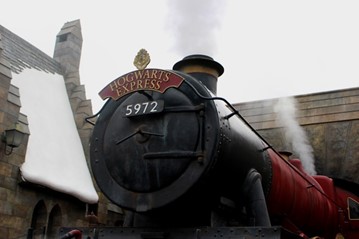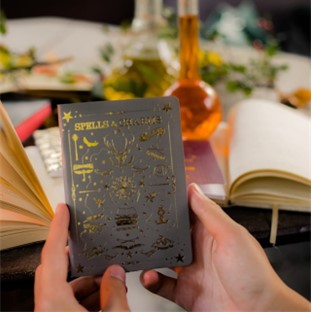J.K. Rowling’s Harry Potter series, with its richly woven narrative of magic, adventure, and friendship, owes much of its depth and appeal to the influence of classic literature and mythology. The series, which has captivated readers of all ages, is more than just a tale of a young wizard’s journey; it is a masterful blend of traditional literary themes and archetypes. Robert Caldwell of PA explores how classic literature and mythology have shaped the plot, characters, and magical elements of the Harry Potter books.
Mythological Archetypes and Characters
Rowling’s characters are deeply rooted in classic literary and mythological archetypes. Harry Potter himself embodies the archetype of the “reluctant hero,” a central figure in many classic tales. Like Hercules or King Arthur, Harry is an ordinary boy thrust into extraordinary circumstances. His journey mirrors the hero’s journey, a narrative framework seen in myths and literature, where the hero ventures out, faces trials, receives aid from mentors, and ultimately returns transformed.
Hermione Granger, with her intelligence and resourcefulness, reflects the archetype of the “wise mentor” or “oracle,” akin to Athena in Greek mythology or Hermione in Greek plays. Her character serves as a source of knowledge and guidance, crucial for the hero’s success. Ron Weasley, the loyal and brave friend, fits the archetype of the “faithful companion,” reminiscent of characters like Sancho Panza from Cervantes’ Don Quixote.
The Hero’s Journey
The structure of Harry Potter closely follows Joseph Campbell’s concept of the “hero’s journey,” a narrative pattern found in classical literature. This journey involves stages such as the call to adventure, crossing the threshold, facing trials, and achieving a significant victory. In the Harry Potter series, Harry’s journey from a neglected child in the Dursley household to the hero who confronts Voldemort aligns with this structure. Each book in the series represents a different phase of his journey, from discovering his magical heritage to ultimately saving the wizarding world.
Campbell’s influence is evident in the way Rowling crafts the story’s progression. The recurring motif of the “ordinary world” transforming into the “magical world” mirrors the hero’s departure from the mundane to the extraordinary, a hallmark of classic hero myths. Harry’s transformation and growth follow the same trajectory as many legendary heroes, reinforcing the timeless appeal of the narrative structure.
Magical Elements and Folklore
Rowling’s magical world draws extensively from folklore and mythology, infusing it with a sense of authenticity and wonder. The magical creatures and spells in the Harry Potter series are inspired by classic legends and folklore from various cultures. For instance, the basilisk, a serpent that can kill with its gaze, is rooted in European mythology. Similarly, the concept of the “phoenix” and its regenerative abilities is derived from ancient myths.
The use of magical objects, such as the Sorting Hat and the Invisibility Cloak, also reflects traditional magical elements found in folklore. The Sorting Hat, which sorts students into Hogwarts houses, is reminiscent of the magical items seen in classic literature that have a will of their own. The Invisibility Cloak, which grants its wearer invisibility, is akin to magical artifacts in folklore that bestow extraordinary abilities upon their bearers.
Themes and Moral Lessons
The Harry Potter series delves into themes common in classic literature, such as the battle between good and evil, the importance of courage and friendship, and the exploration of personal identity. The moral lessons embedded in the series echo those found in classic fables and epic tales. The struggle between Harry and Voldemort reflects the eternal conflict between light and darkness seen in many mythological stories. The series underscores the value of bravery, self-sacrifice, and integrity, themes that have been central to storytelling throughout history.
Rowling’s exploration of the nature of evil and the consequences of choices is reminiscent of classic works like Dante’s Inferno or Milton’s Paradise Lost. The portrayal of Voldemort as a character consumed by power and a disregard for human life mirrors the archetypal villainous figures found in classic literature.

The Hogwarts School and Literary Traditions
Hogwarts School of Witchcraft and Wizardry itself is a nod to classic educational institutions in literature. The idea of a magical school where students are trained to become wizards has roots in classic literature, including the “wizarding academies” of tales like The Magician’s Nephew by C.S. Lewis. The structure of Hogwarts, with its houses and traditions, reflects the importance of educational institutions in shaping character and destiny, a concept explored in various classic literary works.
Conclusion
J.K. Rowling’s Harry Potter series is a testament to the enduring power of classic literature and mythology. The series weaves together elements from ancient myths, legendary heroes, and classic literary themes to create a narrative that resonates with readers of all ages. By drawing on these timeless influences, Rowling has crafted a world that feels both familiar and magical, bridging the gap between classic literature and contemporary storytelling. The Harry Potter series not only pays homage to literary traditions but also reinvents them, offering a new generation of readers a magical journey that is deeply rooted in the rich tapestry of classic literature.
